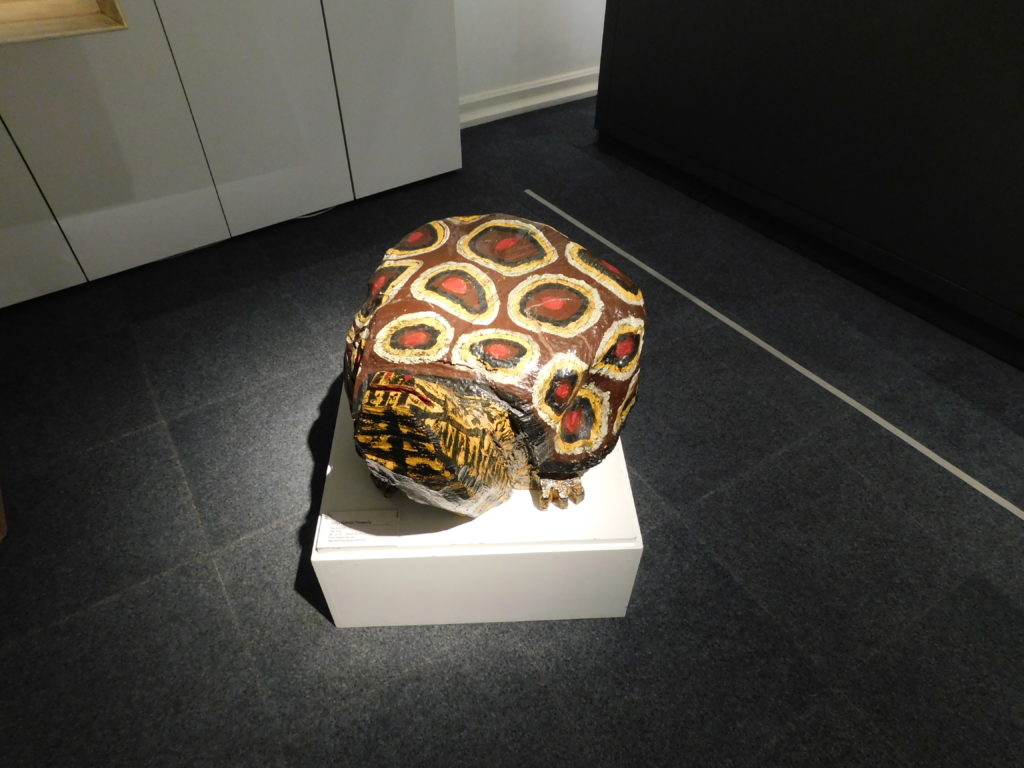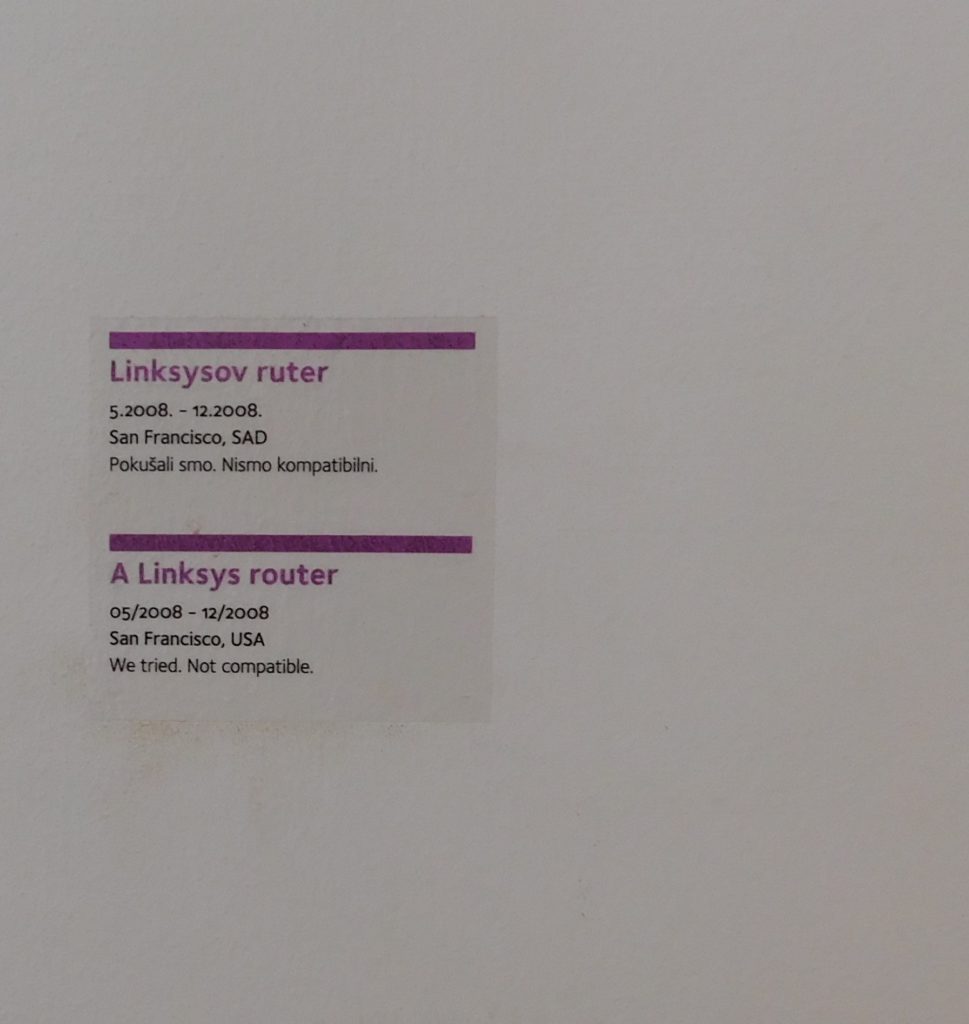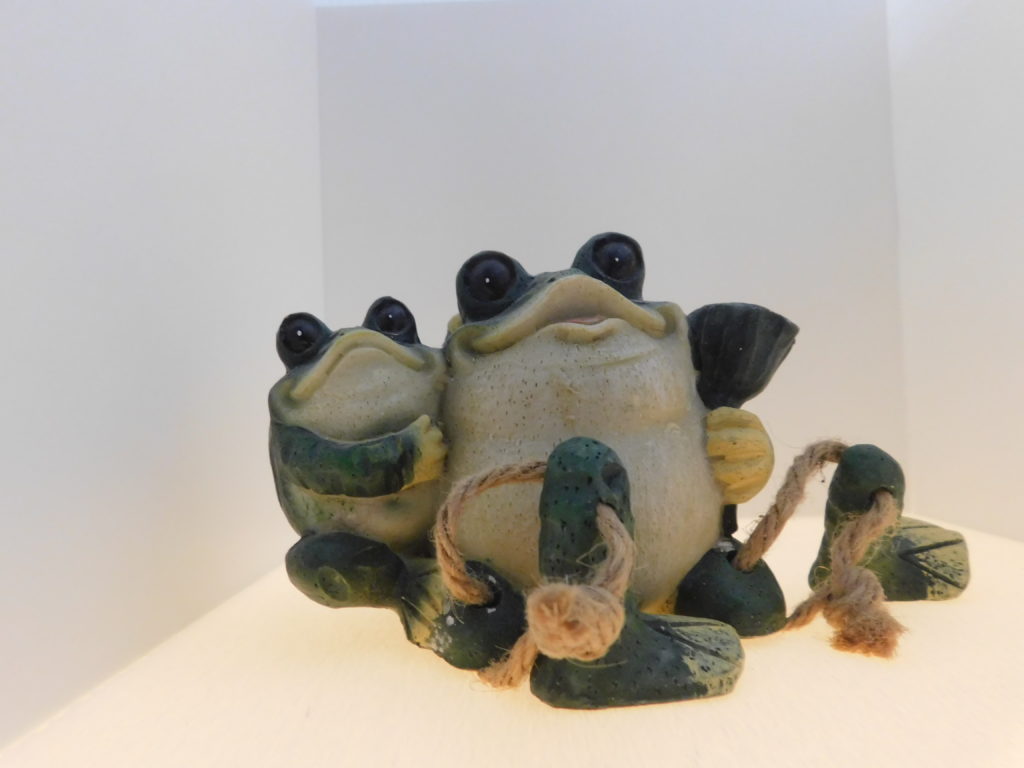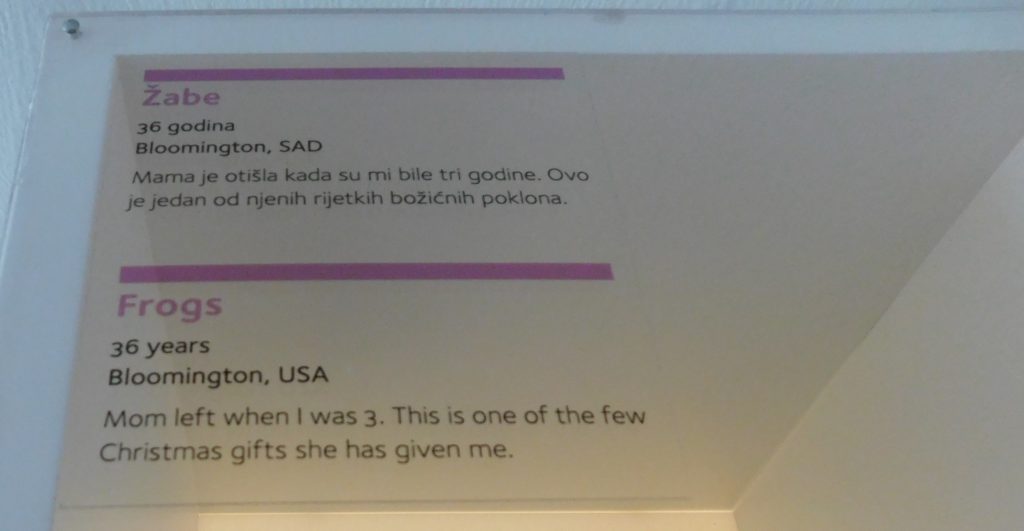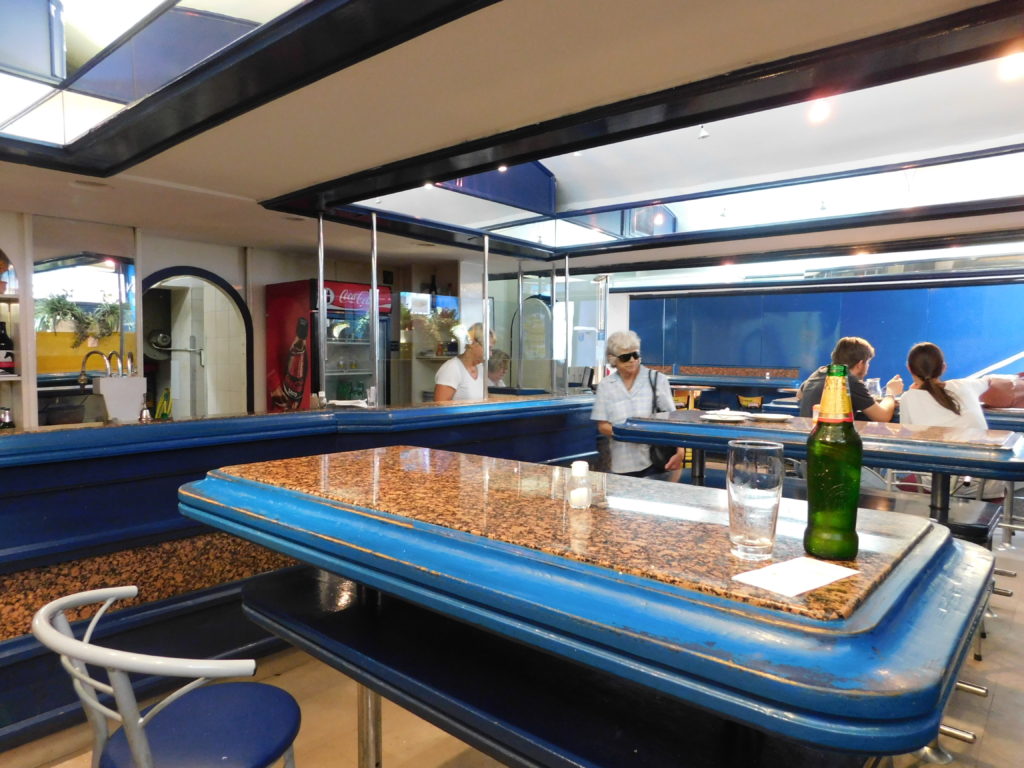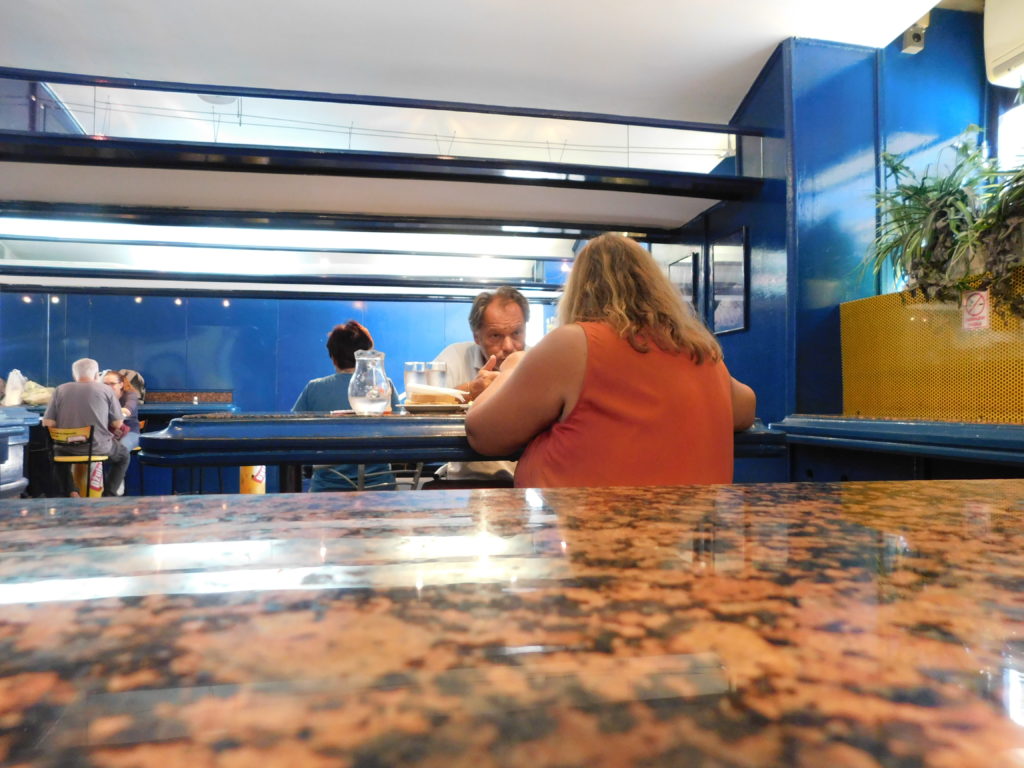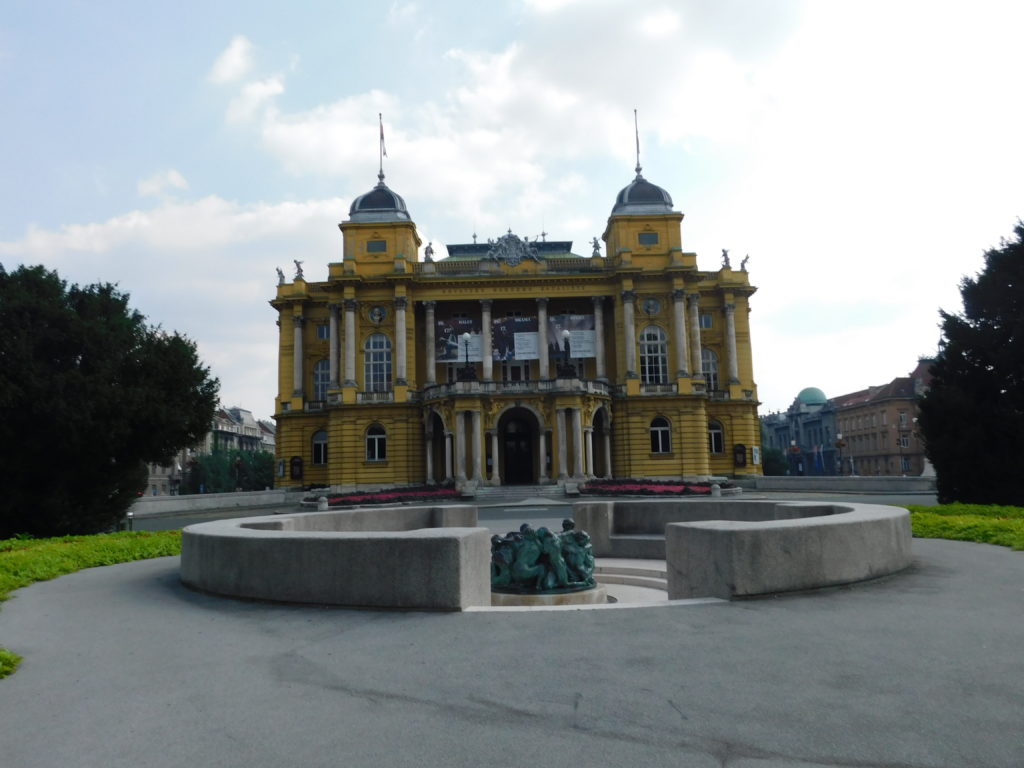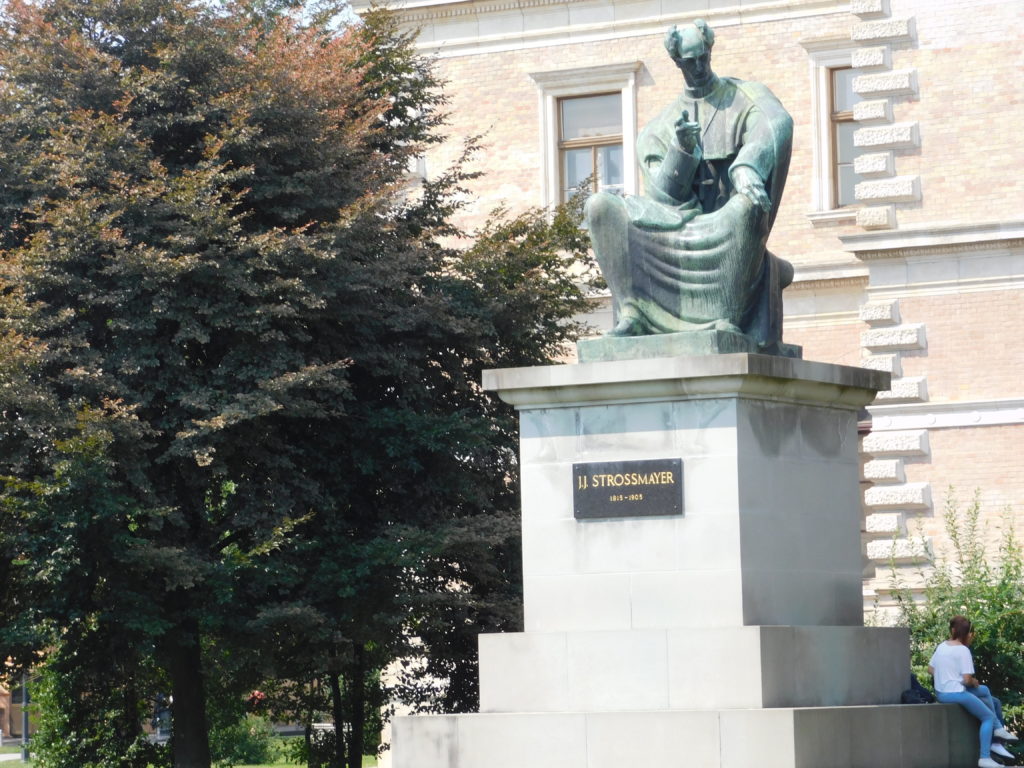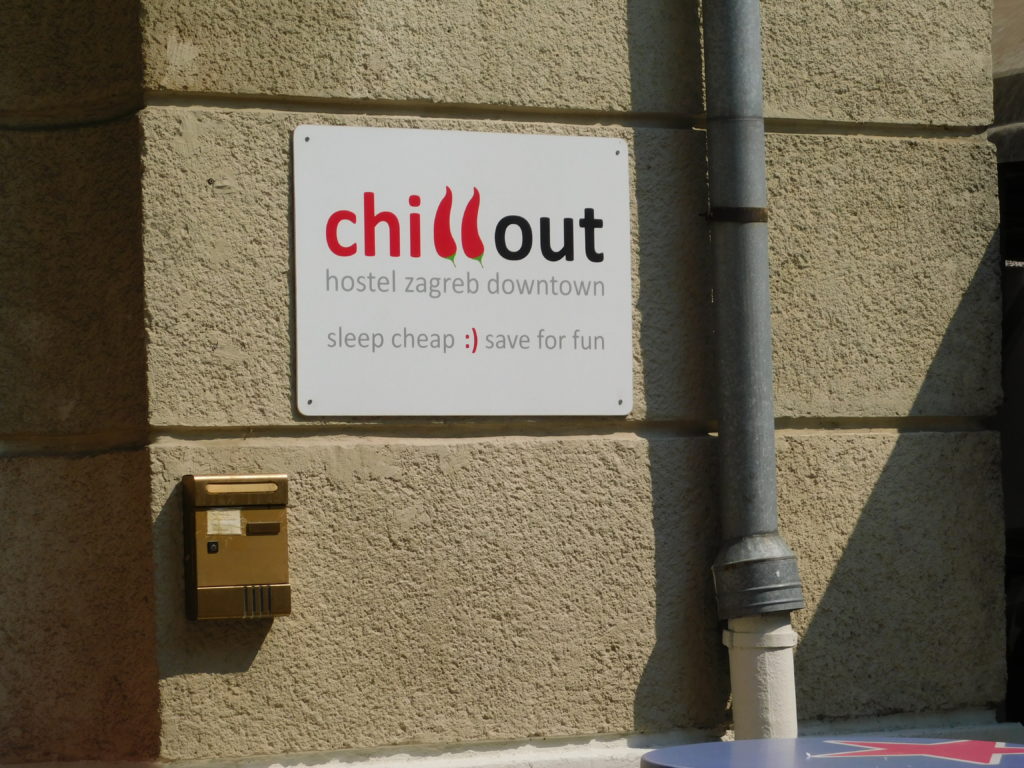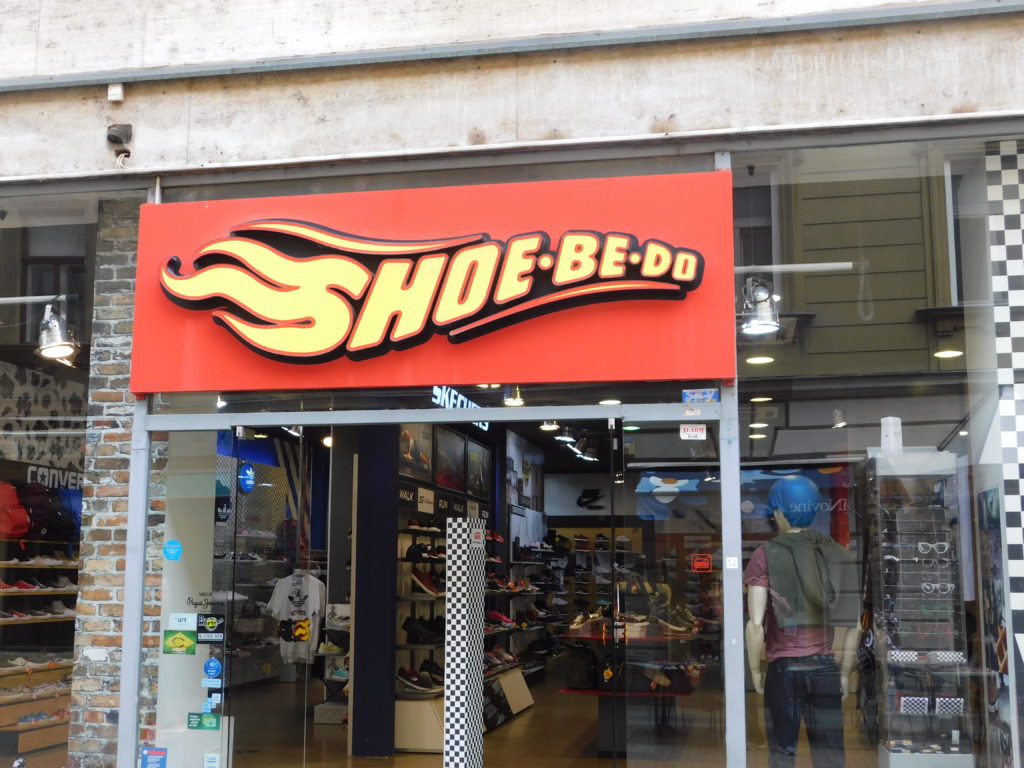The previous post left us standing at the Stone Gate which is where our tour ended, more or less. However, if you recall, I mentioned in the first of these Zagreb bag posts that Damir had asked our guide to take the unusual step of ending the tour in the Upper Town. He did this because he felt he needed to apologize for the faux pas in Dubrovnik (remember that the Ethnographic Museum was closed the day of our visit), so he had generously told us he would purchase our entry into
The Museum of Naïve Art.
In 1952, a museum called the Peasant Art Gallery opened in Zagreb. Within four years the name had changed to the Gallery of Primitive Art – a name it retained for 38 years until an act of the Croatian parliament renamed it as The Croatian Museum of Naïve Art. This sequence of names reflects, in some way, the broader change in the perception of what we now call naïve art. The Croatian Museum of Naïve Art is generally considered the first of its kind in the world.
Naïve art has become a term that encompasses visual art created by someone without the traditional formal education and training that’s associated with a professional artist. It shouldn’t be confused with folk art because the latter is viewed as portraying a distinct cultural context or tradition that may be, but isn’t necessarily, present in naïve art.
One main characteristic of this genre is that it lacks the three classical principles of perspective. These are: with distance the size of objects decreases proportionally, the precision of details decrease, and colors mute. Perhaps the most famous artist who painted in this genre is one whose work was championed by Pablo Picasso – Henri Rousseau.
The museum isn’t large – with about 80 to 100 pieces on display – though it’s said to have a collection numbering close to 2,000. This is one I particularly liked:.
and another that, of course I had to include in my photo collection.
Catharsis of another kind.
Just steps from the naïve art museum was another institution that I’d eagerly anticipated visiting and that, until quite recently, was unique to Zagreb – The Museum of Broken Relationships. The idea for this museum grew out of a joke when film producer Olinka Vištica and her lover of four years Dražen Grubišić ended their relationship and joked about setting up a museum to store their leftover personal items.
The idea apparently never left the thoughts of Grubišić and three years after their breakup he contacted Vištica and suggested they actually mount such an installation. They began soliciting items from friends that had been left behind in their breakups and they put on an exhibition that was first displayed at the 41st Zagreb Salon. (Inaugurated in 1966, the Zagreb Salon is an annual national exhibition of recent works of art, contemporary art production, alternating visual arts, architecture and urban planning, and applied arts and design.)
Following this initial success in 2007, the collection toured the world for the following four years. It finally landed back in Zagreb when the creators rented a permanent space in the Gornji Grad. Over time, the collection has expanded beyond displaying items from only romantic breakups. It now includes objects from the full range of relationships someone might have been part of.
In the museum, each object is accompanied by an explanation from the donor. Some are short and pithy. Others are long and confessional. Some induce tears. Others induce laughter. I have a few samples.
Because:.
Or:
(with a little sadder explanation):.
The museum has an interesting website that you might want to visit. (In June of this year, a second Museum of Broken Relationships opened in, where better, Los Angeles.)
And it’s not even lunchtime.
In some past blogs, I’ve plated more than an entree’s worth of words on my meals. I’ve spent far less time on that in the current effort. This is mainly because more than two months have passed since I started the trip and, while many of the meals were fine, few were memorable. My lunch in Zagreb will change that. In one way it wasn’t the food that was particularly memorable. Though, in another way, it was.
I sought out the restaurant Mimice in the downtown area because of this description from the Spotted by Locals website:
OK, maybe the word “restaurant” doesn’t suit it very well – this place looks more like an unpretentious bar from the Socialist era, where you order and pay for your food at the counter and dine while sitting on high stools behind bar-like tables. In many ways, time has stopped in this blue-colored joint.
Somehow, I found that irresistible. And it lived up to this billing.
The entrance:.
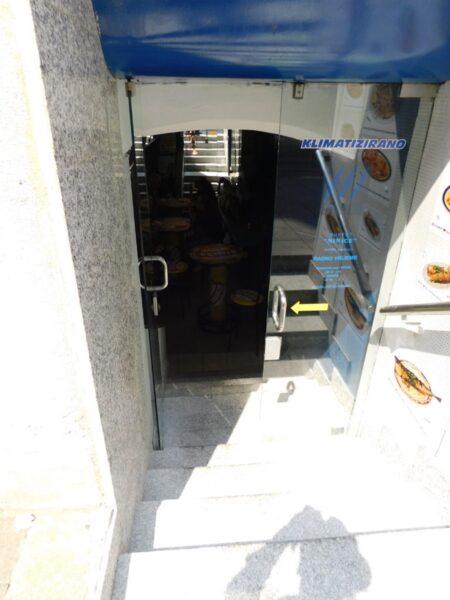
The ambiance:.
(And a sneaky picture of other diners before I left):.
I will also remember the meal – a plate of pan-fried smelts so much like the dish my mother made – that it tasted a little like my childhood. It didn’t bring on the intensity of Proust’s madeleine cookie perhaps because in those days I drank water not beer but it was a lovely memory nonetheless.
I spent the remainder of the day primarily wandering the Donji Grad (Lower Town). The only non-wandering parts of my afternoon were walking from Mimice to an optician (I actually tried two) because I’d broken the temple off my prescription readers the night before our arrival (they couldn’t be repaired) and to find Earth in the Nine Planets exhibition. Otherwise, I meandered. I took some photos (the last of my own I have to share with you) and just enjoyed the city.
Here are a few of them:
The beautiful (and in need of some repair) National Theater.
Statues of Bishop Štrosmajer (I’ve written about him).
And Nikola Tesla who was born in Smiljan – about 200 kilometers southeast of Zagreb.
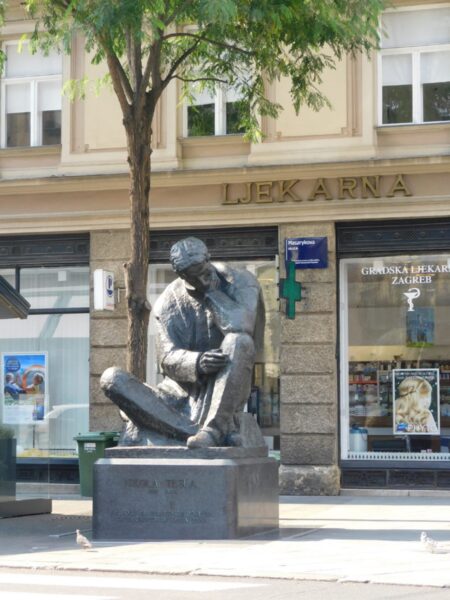
Plus a couple of signs that tickled me:.
(Perhaps a hot place to spend the night?)
and this one
(which would have been perfect had the store next to it been {perhaps a jewelry store} named Bead-Do-Wop-Wop but alas…)
Brace yourselves for more history. Tomorrow, we visit Kumrovec the birthplace of Josip Broz Tito.

